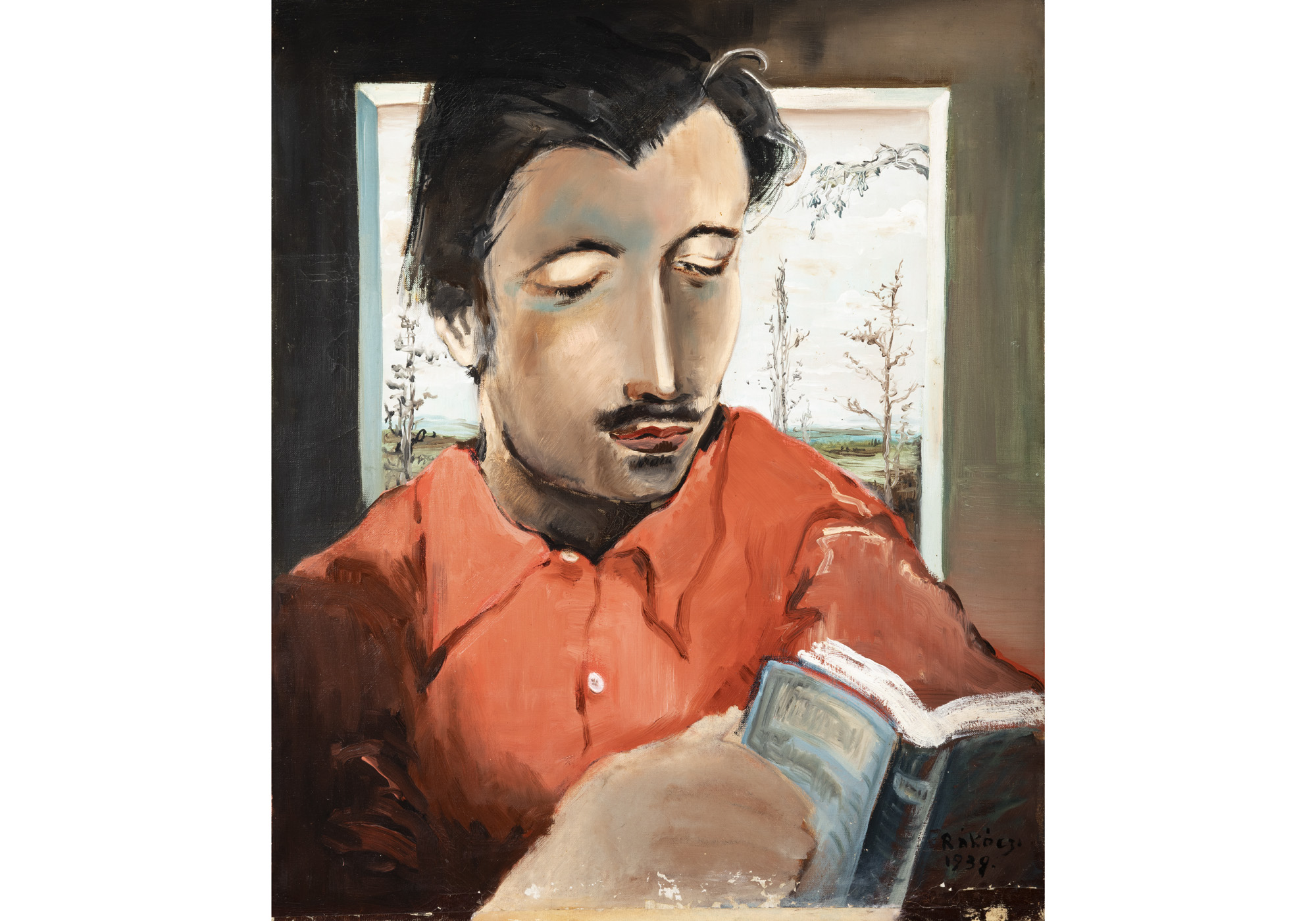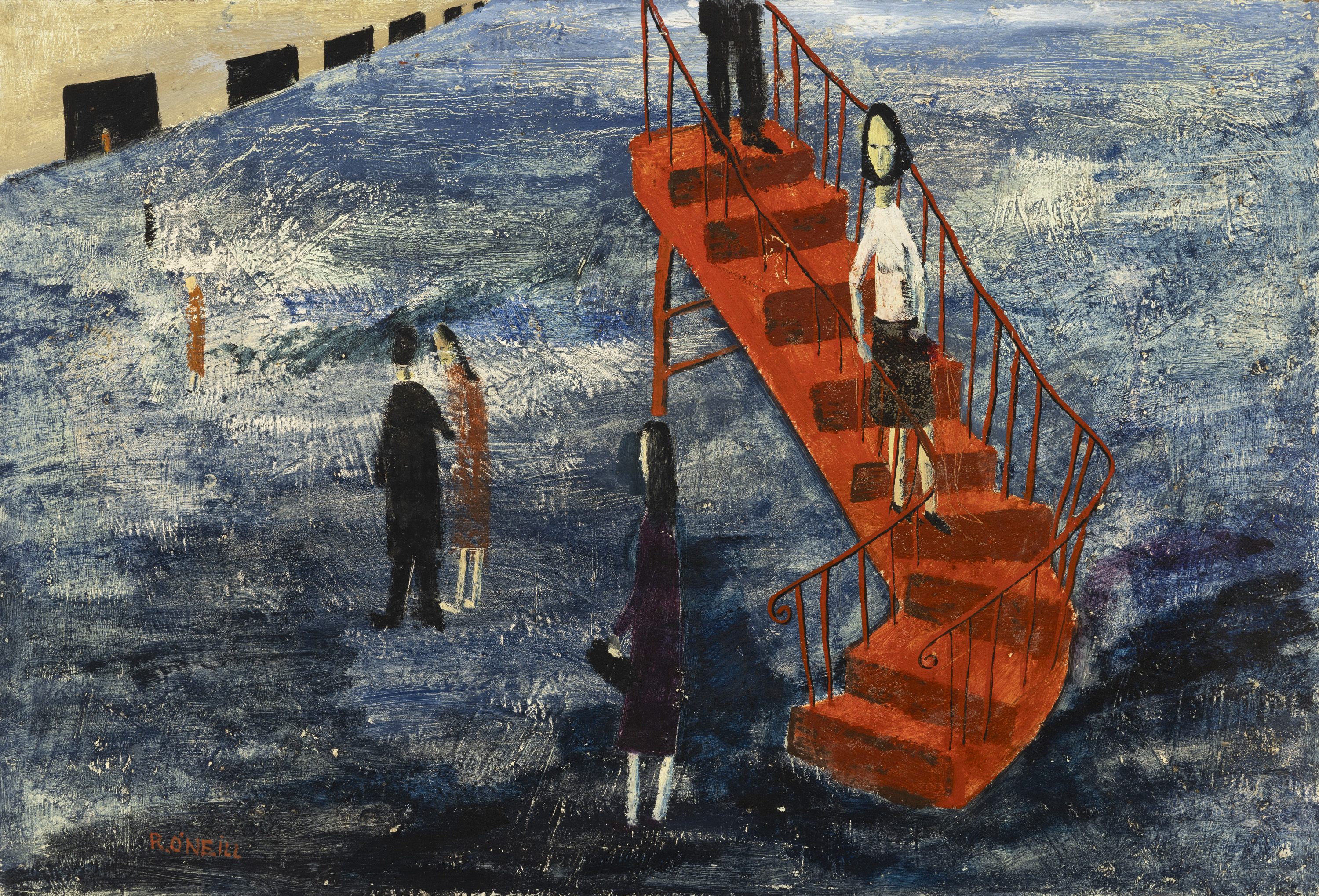Departments
.svg)


A pair of 18th century oil paintings depicting views of the Barne Estate, Co. Tipperary, are included in this year's Country House Collections Sale at Townley Hall (lot 356), with a given estimate of €10,000 - 15,000.
The catalogue note for this lot was written by Stephanie Brennan:
'The Barne Estate, thought to have been established between 1710 and 1750 sits proudly in the abundant countryside setting of the Golden Vale in South County Tipperary. The stately home potentially incorporates an earlier 17th century abode and further evolved in the 19th century to reflect more continental sensibilities with a French château-style pitched roof. Today, it remains a commanding presence on the gentle rolling hills between the historic towns of Clonmel and Cahir, complete with 631 acres of fertile farmland and a feature lake.
Large three storey house, early 18th century, with eleven bays, with the last two on each side projecting forwards. The centre features a front-piece of paired Doric columns and entablature, surmounted by an aedicule of two engaged ionic columns and a pediment framing the central first-floor window. The roof was replaced in the 19th century with a high-pitched French chateau style roof with dormers. (Burkes’ Guide to Country Houses, p. 32)
The Barne Estate is the former residence of the Moore family, under whom it has flourished for the past three hundred years. The Moore family was established in Clonmel from the early 17th century, with Richard Moore, a former glover arriving from Barnstaple, Devon in circa 1654. Moore made his wealth as a land agent and sheep farmer when wool was an asset and from there expanded through political appointments with financial favours from the Crown. This led to him becoming a prominent local figure as the High Sheriff in Waterford in circa 1666 and Tipperary incirca 1676. The Moore family became the local political force, replacing the Dukes of Ormond who had been the established rulers in that geographical area.Richard Moore’s lineage continued through his sons Stephen, who lived at Barne Estate and Thomas who resided at nearby Chancellors town.
The origin of Moore’s wealth as a landed sheep farmer and wool merchant can be traced to the roaring wool trade of Waterford, dating back to the Middle Ages of which Richard Moore profited. This is strongly acknowledged in this pair of 18th century landscape paintings. Both aspects of the house feature a flock of ewes peacefully residing on the lawns directly before the building. The idea of a ‘lawn’ as we understand it now with cropped grass was a relatively new concept dating to the 18th century, popularised by landscape designers such as William Kent (1685-1748) Lancelot ‘Capability’ Browne (1716-1783). Sheep were usually found past the ha-ha maintaining the sward but as the Barne estate never had such a division as a ha-ha it is likely that the flock would have been quite free to roam the immediate grounds to trim the herbage. We should note that it is likely that the artist is acknowledging the importance of the sheep as a major contributing factor to the Moore’s success by placing them prominently in the midground in both artworks. The oblique view of the house in particular,with the gentle peak of Slievenamon rising from the trees serves to further this image of the bucolic idyll.


Landscape painting as we see it here was popularised in Ireland in the 18th century by leading figures such as Robert Crone (fl.1718-1779), John Butts (1728-1764), George Mullins (fl. 1756- 1765) and William Ashford (1746-1824). The ‘Grand Tour’ expeditions exposed Irish and British artists to the Grand Masters of the Continent, heavily influencing their approach to an Irish landscape. This swell of interest and application was further aided by the foundation of the Dublin Society in 1731 and its first school in 1746 and later the Royal Irish Academy (1755). Similarly, noted Irish philosopher Edmund Burke published his seminal treatise A Philosophical Enquiry into the Sublime and the Beautiful in 1757 which had a tremendous influence on landscape painters both in Ireland and abroad. It is quite evident that this pair of late 18th century paintings of the Barne Estate are absolutely typical of the type produced by the aforementioned leading artists of the period. They remain an important acknowledgment of Ireland’s vigorous merchant history and Tipperary’s legacy as a rich and profitable seat of note.
Given that these paintings were most certainly painted in the late 18th century, reflecting the earlier roof style and the unmistakable influence of the Landscape Garden style popular at that time, we can safely assume that the artist was commissioned to produce the pair to mark an occasion. It is likely that these pieces were produced as a sentimental wedding gift to mark the occasion of Henrietta Moore’s (1747-1831) marriage to Thomas Pepper (1733-1790) of Ballygarth Castle,Co. Meath in 1772. Henrietta being the eldest daughter of Richard Moore(Stephen Moore’s son) of the Barnes estate.'
A portrait of Mrs Moore of Barne, Lady Barne, attributed to Thomas Hickey, is also included in the sale (lot 324).
Please see our 'Upcoming Auctions' page for further information, including viewing times and location, and how to register.




Through this article, let our expert Adam Pearson guiding you to the (re)discovery of the once established Irish painter Richard O’Neill.











Buying at Auction and the Role of Antiques in a Modern Home




Important Irish Art Auction Highlights

Oliver Dowling Collection by Aidan Dunne




2024 is a year in which Adam’s wants to recognise the key role buying antique furniture and furnishings at auction contributes greatly to the sustainable initiative. In 2019 the Environmental Protection Agency reported stark figures that each year in Ireland 1.2 million reusable bulky items, primarily furniture goes into landfill. Similar to the problem of ‘fast fashion’, the constant production and consumption of new items is leading to rapidly growing waste problem. We want to acknowledge those who are already buying second hand or antique furniture at auction and to encourage new buyers by highlighting the benefits of acquiring affordable, well-made quality items that are built to last.







Irish author, recipe creator and lifestyle influencer, Indy Parsons, selects her favourite pieces from our upcoming Fine Jewellery & Watches auction










.jpg)

Cork-born Irish actress, Sarah Greene, selects her favourite pieces from our upcoming Fine Jewellery & Watches auction




Yvonne Aupicq had met Orpen, we understand, while working as a nurse during the war. He had been admitted to hospital with a suspected case of scabies which ended up being a far more serious case of blood poisoning as he recounts in his wartime memoir ‘An Onlooker in France’. Their relationship continued after 1918 when Orpen was appointed as the official artist to The Paris Peace Conference. They relocated to capital and over the following decade he painted her numerous times, often nude as in Amiens 1914, or The Rape and Nude Girl Reading (1921). Working with her as his model during these early years after the war allowed Orpen an opportunity to re-fuel his creativity.






Editor-in-Chief of IMAGE Publications, Lizzie Gore-Grimes, selects her favourite pieces from our upcoming Fine Jewellery & Watches auction

Our upcoming Fine Jewellery & Watches auction on September 13th features a prime example of Van Cleef & Arpel's renowned 'Mystery Setting'


Our June auction offers a once-in-a-lifetime opportunity to acquire one of the great masterpieces of Irish art and icons of Dublin’s history.



Georgia Chiesa selects some of her favourite lots in the upcoming Vintage Wine & Spirits Auction


"Beating the bounds is a tradition that can be traced back to the medieval period. At this time, land was divided into parishes and the clergy and church wardens held the responsibility for its upkeep and management. It was up to the Church to ensure that its parishioners knew the local boundary lines and, before maps became commonplace, this had to be kept as a mental record."

Adam’s in conjunction with Suzanne MacDougald are proud to host an online timed auction of artworks to aid the Irish Red Cross’s humanitarian work in delivering vital services to millions of people impacted by the conflict in Ukraine. With no buyers premium 100% of the hammer price will go directly to the Irish Red Cross.

Ros Drinkwater writes of Jack B Yeats' 'The Boat' in the Business Post:


With a consolidated result of €320,000,the At Home sale in Stephan’s Green, was a great success.

